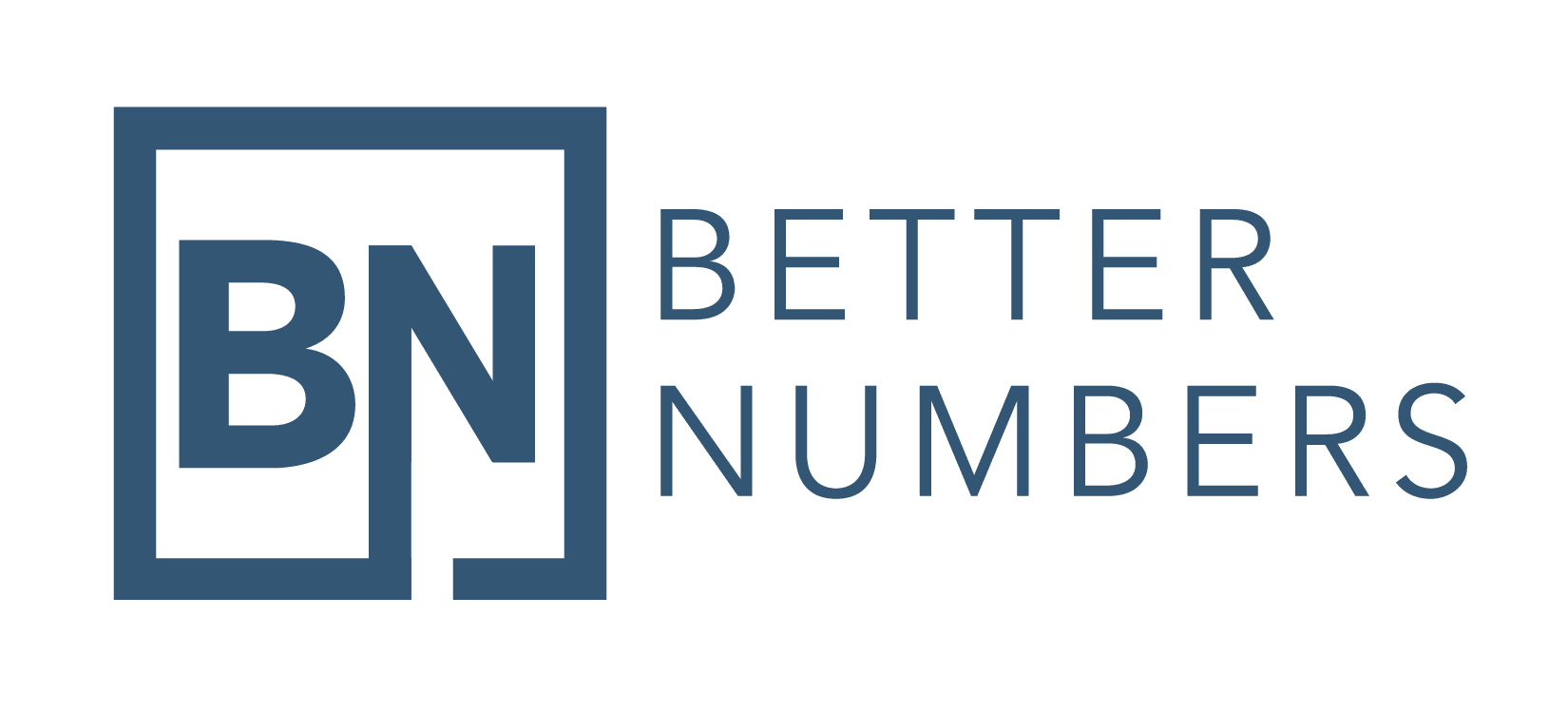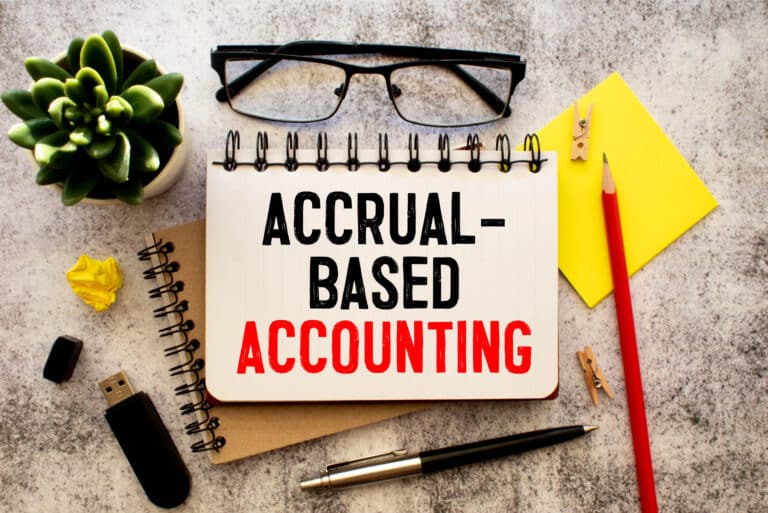When it comes to improving your business, monetary infusions aren’t always feasible, especially during economic downturns like the COVID-19 shutdown. Don’t let that stop you from finding ways to improve your marketing agency. There are a variety of ways to improve your marketing or creative business without additional capital or expense.
Our CPA firm uses the 4 Pillars of Business Strategy framework to help businesses succeed, because it focuses on all aspects of business:
We often advise our clients to work from these pillars in the order listed above. Once you decide which pillar to focus on, develop Key Predictive Indicators (KPIs), metrics about your business which could be predictive of its future performance. You should be able to influence these metrics and ultimately turn your business from the business that you have to the business that you want. Some tips to get started:
- Identify which data you have available in your business
- Identify KPIs that are limited to that data
- Determine which KPIs would be most productive to track and affect
- Put processes and systems in place to gather and warehouse the data to support tracking those KPIs

A trusted Certified Public Accountant (CPA) will help you develop a strategy to improve your business based on the 4 Pillars without additional capital. Here’s how we do it:
Implementing Customer Acquisition & Sales Plans
When we work with clients on the customer acquisition and sales pillar, we review their financial documentation, processes and research. Our plan includes state of the industry and economy, benchmarking, ratio analysis and financial process assessment. Additionally, we develop and monitor some of the following KPIs that relate to customer acquisition and sales:
- Net promoter score
- E-mail list subscribers
- E-mail marketing engagement rate
- Customer acquisition cost
- Average revenue per client
- Average Google and Facebook review
- Number of website visitors
Perform a marketing audit
Marketing agencies perform audits for their clients’ marketing all the time. But how often do they take a close look at their own marketing?
Start by determining how well your agency builds trust and credibility with your potential clients and the clients you already have. Review your mission and values. Does it still hold relevance for your agency? How is your agency putting action behind the words? If you don’t have a mission and vision statement, consider drafting one. Examine online reviews and accolades. What are your customers saying? What is a common thread in positive and negative reviews?
Every marketing strategy — every business! — should create awareness and demand. What marketing platform is working best for you? Does this marketing platform, campaign or strategy reach your target market audience or are you spending a lot of time fielding phone calls and e-mails from prospects who aren’t a good fit for your agency? How is your marketing generating leads? How often do your leads turn into customers?

Check the Price
When is the last time you read through financial documents, such as a profit and loss statement from your CPA? Check on how your agency’s margins are doing by evaluating the figures and looking at the big picture of your agency’s profitability.
One of the common mistakes agencies make is not charging an appropriate price for their services. If your agency doesn’t charge enough for the base services, this will only hurt your company’s profitability and growth rate. Imagine what it would look like if you doubled your price.
Timing is a key element to raise your prices. If you raise your prices during challenging economic times, you will likely experience friction with clients who are tightening their purse strings. Instead, plan for a future price change. How will you inform your clients? What will your message say? Clients who value you will not mind paying a premium.
Formulating a Financial Strategy
Strategic planning is a good way to boost your business without spending too much money. Coming up with a solid financial strategy, guided by detailed reports from a CPA, will help you formulate attainable goals that can give your company solid direction. Some common KPIs for financial strategy that we track include:
- Gross margin percentage (overall)
- Gross margin percentage (by customer)
- Gross margin percentage (by product or service)
- Top expenses as percentage of sales
- Cash conversion cycle
- Inventory/WIP on hand
- Altman Z-score
- Vendor discounts awarded
Here are some key areas to consider with your financial strategy:
Lower the Cost of Goods Sold (COGS)
Cost of Goods Sold is the variable cost behind your set price. This is the cost generated from the raw material costs from different suppliers or vendors. COGS excludes indirect costs such as overhead and sales and marketing. COGS is deducted from revenues (sales) in order to calculate gross profit and gross margin. Higher COGS results in lower margins.
Start by asking your supplier or vendor for a discount. Do they offer discounts if you order bulk or raw materials? Consider shopping around for a new supplier with better terms of payment. When done correctly, automation lifts administrative burden and performs repetitive tasks so your team doesn’t have to.
Check out this blog on marketing agencies and profit margins.
Reduce Operating Expenses (OpEx)
Perhaps there are ways to reduce your agency’s daily Operating Expenses?
Prioritizing your OpEx means minimizing unnecessary expenses. This could be as simple as cutting costs on free staff donuts. If you don’t need a posh place to conduct business, move to a cheaper office or consider remote working full-time. Instead of the computer vanity purchase, focus on proper staff training. When’s the last time you took a close look at the long list of digital subscriptions coming out of your account each month? Nix the ones that you don’t regularly use or find more affordable alternatives.
Here are some more ways to improve your agency’s working capital.
Aim for Quicker Accounts Receivable (AR) Turnover
Accounts receivable turnover is the number of times per year that a business collects its average accounts receivable. If you have clients whose payment you rely on but they are always late in making payments, it is time to pick up your phone to remind them what they owe you. There’s no shame in reminding them about your invoice for the services you’ve rendered or products you have delivered.
Offering early payment discounts could be a good incentive to get them to pay ahead. Our clients have had great success with AR by simply implementing automatic late payment notifications in which an auto e-mail is sent to clients when their invoices are overdue.

Targeting the Right People & Culture
Every healthy business needs the right people and culture to stay on a path of growth. As a business owner, it’s your job to determine the right people working in the right roles and to ensure that you have clear guidelines in place that minimize costly mistakes.
Here are typical people and culture KPIs:
- Number of clients by employee
- Salary and wage benchmarking
- Time per project
- Time per client
- Employee Net Promoter Score
- Employee Turnover Rate
- Revenue Per Employee
- Percentage of employees electing benefits
- Average duration of open positions
- Average Glassdoor rating
- 360 Feedback Score
- Human Capital Value Added
If you don’t have a Human Resources professional, consider an outsourced HR company, who can mitigate risks associated with employing people. They will keep you compliant while offering suggestions on how to attract and retain your workforce.
Company culture may seem like a buzzword, but it’s an important part of every business’ strategy because without people, you wouldn’t have a business. If your employee retention rate is high, think about the cost of scouting for potential employees, training and paying for their benefits. Or if the people you are hiring aren’t properly trained, they could make expensive mistakes or drive away good-paying clients.
Customers have a lot of choice and the demand is high for marketing agencies and creative freelancers. If you have a less than stellar company culture, customers easily pick up on this and it won’t be long before word of mouth spreads.
Assess Risk Management
Every good business plan will help you prepare for the unexpected. When it comes to risk management, the fourth pillar of business strategy, capital isn’t required to identify and assess threats to your agency’s financial future.
Risks come from different areas, including legal liabilities, accidents, natural disasters, competition and more. A risk management plan should include your agency’s processes for identifying and controlling risks such as:
- Product/Services concentration: Determine where your company revenue is coming from. If you sell a lot of services or products, you have a risk that they will become irrelevant or disrupted. Kodak cameras and Blockbuster were once big brands, but as technology advanced, their products became irrelevant. Netflix, on the other hand, has adapted to the changes in the market (so far). What specific product/service is sellable? Check if you need to diversify your offerings.
- Client concentration: What happens if a client leaves you or goes out of business? It’s imperative to dilute the client pool, so that you don’t have to make cutbacks if a client unexpectedly leaves. Check the demographics of your clients. Nurture the existing ones and aim for newer ones.
- Internal controls over financial processes: Pay attention to the cash flow and the processes involved in handling money. When you implement a new strategy for your business, it takes time to play out. Do you have a cash reserve, money that is put away to help innovate or to pay for unexpected expenses? Check out our Cash Reserves Calculator to see how much you should be saving.
- Insurance: Protect your business and make sure you are properly insured. This could include general liability, commercial property, professional liability, workers compensation, business income, etc.
- Preparing for Disruptions: Prepare for emergencies by always reading industry news and studying trends, so you won’t be caught off guard. Many one- or two-person marketing agencies fail to pay themselves reasonable salaries. This is an important area to keep a close eye on because it’s an area the IRS monitors.
The bottom line
There are numerous ways to improve your agency without raising the capital. Increasing efficiency is a primary consideration because you can get more work done with less effort.
By working through the 4 Pillars of Business Strategy in a methodical way, you will give your business the best chance at sustainable growth. Once you’ve determined which pillar you need to focus on, identify which related KPIs you want to track and whether or not you have the data to support such an endeavor. Collecting and storing more data in your business will allow you to track any KPIs you’d like, and track them in a way that provides context. If the data isn’t available, consider putting processes and systems in place to start gathering that data.
For marketing agencies, it’s imperative to develop processes that take care of your clients with good communication that addresses their needs. This will always bring on profitable outcomes. Focusing on what you’re doing right and learning from your mistakes are ways to help your company grow with the least use of monetary resources.




